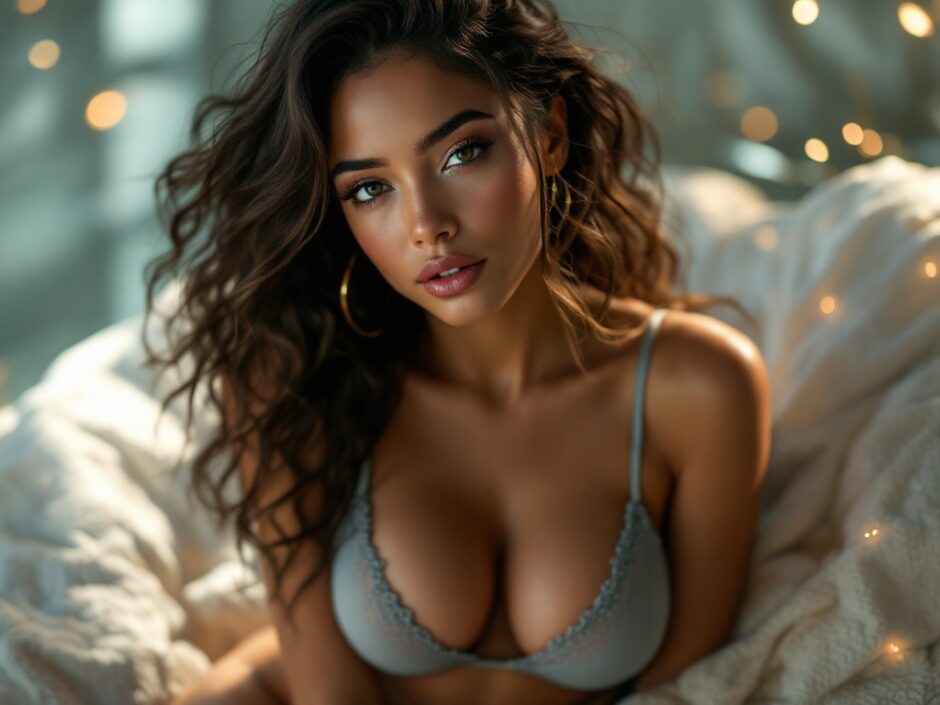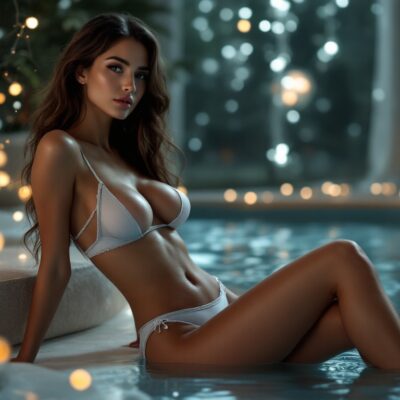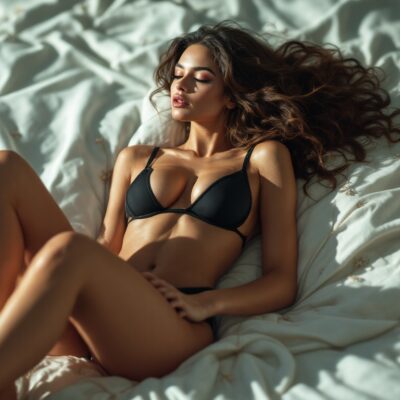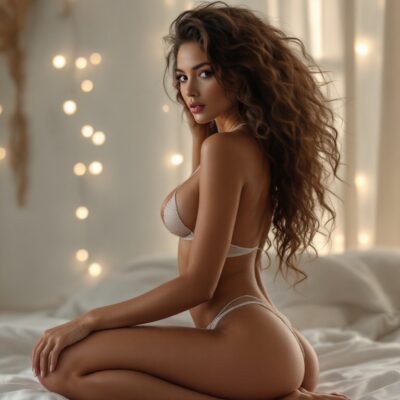Throughout history, erotic art has served as a vibrant medium of expression that transcends simple visual appeal, delving into the intricate realms of desire, intimacy, and the human experience. The enduring clash between tradition and innovation resurfaces within this genre, especially as artificial intelligence emerges as a pivotal player. With technology advancing at lightning speed, artists are presented with the chance to reimagine their creative methodologies. AI introduces revolutionary tools capable of generating fresh concepts and challenging conventional perceptions of artistry. The looming inquiry remains: will these technological breakthroughs enrich the esteemed legacy of erotic art or completely eclipse it? As we explore the universe of erotic art, it is crucial to recognize both its deep-rooted traditions and the exhilarating prospects of future innovation.
This inquiry invites readers to ponder how the intersection of artificial intelligence and traditional practices could redefine the future of erotic art. Artists have perpetually ventured into new techniques and materials, mirroring societal transformations in attitudes toward sexuality and intimacy. The proliferation of Nude AI apps not only opens up alluring possibilities but also provokes ethical dilemmas regarding representation, genuineness, and creativity. In a domain where personal expression reigns supreme, the effects of AI’s participation warrant scrupulous consideration. How can we navigate this uncharted territory without sacrificing the core essence that allows erotic art to deeply resonate with its audiences? Perhaps the solution lies in a confluence of both realms.
The Evolution of Erotic Art
The historical importance of erotic art is both rich and diverse, embedded within a variety of cultural backgrounds. From ancient relics illustrating fertility to contemporary interpretations showcasing stylized forms of intimacy, erotic art has transformed while preserving its fundamental themes of beauty and desire. Esteemed artists like Egon Schiele and Gustav Klimt have made indelible contributions to this genre, employing distinctive techniques that enthralled viewers. Each era and movement reveals unique perspectives on sexuality, often mirroring the cultural norms and taboos prevalent at the time. Within this framework, erotic art functions not merely as a vessel of pleasure but also as a critique on human relationships and societal constructs.
Traditional Methods of Creating Erotic Art
Traditional approaches to erotic art encompass a spectrum of disciplines, each possessing its own legacy and significance. Artists frequently utilize a variety of mediums—such as painting, sculpture, and photography—to convey intimate themes. Among these, painting and drawing hold a revered place, enabling artists to delve into intricate details and personal fantasies. In recent years, however, a significant shift toward technology has overshadowed some of these classical methods. Nevertheless, many artists find that the tactile connection offered by traditional tools creates an unparalleled experience that digital mediums often cannot replicate.

- Painting and Drawing:
- Classic instruments like brushes, oil paints, and watercolors.
- The captivating allure of hand-drawn textures and subtle nuances.
- Artistic expressions that mirror personal emotions and connections.
- Sculpture and 3D Art:
- A variety of materials, including clay, stone, and metal.
- The tangibility and three-dimensional aspects that deepen viewer engagement.
- Hands-on craftsmanship that showcases the artist’s touch.
- Photography:
- A captivating blend of realism and artistic composition.
- Techniques such as lighting and framing that enhance eroticism.
- Ongoing evolution through both film and digital methodologies.
Through these traditional techniques, artists engage with themes of sexuality and desire in ways that resonate profoundly on both personal and cultural levels. However, the rising influence of artificial intelligence is starting to challenge these conventions.
The Rise of Artificial Intelligence in Art
AI technology is dramatically reshaping the creative landscape, unlocking doors once thought permanently closed. Artists have begun to harness generative art tools, employing algorithms that learn from pre-existing works to craft new styles and concepts. This innovative approach generates excitement as it heralds a fresh era of artistic discovery. Yet, amidst this exhilarating novelty, a pivotal question lingers: can AI truly encapsulate the profound depth of human emotion intrinsic to traditional erotic art?
| Traditional Methods | AI Approaches |
|---|---|
| Handcrafted techniques | Algorithmic styles |
| Distinct personal expression | Data-driven creation |
| Tactile medium interaction | Virtual experiences and interactions |
Moreover, AI offers unprecedented levels of customization and personalization. Artists can employ AI to adapt their artwork to meet individual tastes, effectively curating personal erotic experiences that honor a spectrum of sexual identities. This adaptive nature presents both exhilarating opportunities and formidable challenges for artistic integrity and emotional authenticity.
The Intersection of AI and Traditional Techniques
The fusion of AI and traditional methods can produce remarkable outcomes, encouraging artists to delve deeper into their creative endeavors. Many creators are starting to perceive AI as an extension of their artistry, rather than a full replacement. The idea of augmented creativity empowers artists to utilize AI tools to bring to life visions that might otherwise remain unexpressed.

As these hybrid art forms take shape, they provoke reconsideration of our established notions of what constitutes erotic art. The amalgamation of techniques can lead to groundbreaking projects addressing contemporary issues of sexuality, identity, and agency. Artists are not merely employing technology for novelty’s sake; they are weaving it into a narrative rich with complexity and emotion.
Ethical Considerations in AI-Generated Erotic Art
The introduction of AI into erotic art prompts critical ethical discussions that must not be overlooked. Consent and representation are central themes when addressing human intimacy in any artistic expression. Traditional artists often commit themselves to authentically portray genuine experiences, yet the automatic nature of AI complicates this process. Questions arise concerning the fidelity of representation, particularly when technology generates content based on existing data devoid of human nuance.
- Consent in Artistic Representation:
- Upholding ethical standards in AI-generated portrayals.
- Grasping the ramifications of algorithmic imagery.
- Authenticity and Worth:
- Debating the role of AI in the art marketplace.
- Contemplating the emotional weight of human-created versus AI-generated art.
As we navigate this continually evolving landscape, it is crucial to frame discussions regarding AI-generated erotic art with an appreciation for tradition. Striking a balance between innovation and authenticity is vital to preserving the emotional richness that characterizes this genre. Artists can draw inspiration from both realms, fostering a creative ecosystem that honors the past while welcoming the future.
Conclusion
In reflecting on the horizon of erotic art, the interplay between traditional techniques and AI tools brings forth both thrilling possibilities and significant challenges. The integration of technology into this intimate genre could elevate creativity and expand accessibility; conversely, it also risks diluting the authenticity that has historically defined erotic art. Ongoing dialogue must address these intricacies to find harmony between progression and tradition. Artists, critics, and audiences alike hold a pivotal role in determining the evolution of this landscape. If approached thoughtfully, the future of erotic art could emerge as a vibrant tapestry woven with the richness of both human expression and technological finesse.
FAQ
- What defines erotic art?
Erotic art is creative work that explores themes of sexuality and intimacy, often evoking thought and feeling surrounding human relationships. - Can AI produce truly authentic erotic art?
While AI can create artwork through algorithms and data, the authenticity and emotional depth of such creations may be questioned when compared to traditional art forms. - How are artists incorporating AI into erotic art?
Artists utilize AI platforms for inspiration, experimenting with styles, and crafting singular pieces that fuse elements from both traditional and contemporary art. - What are the possible drawbacks of AI in erotic art?
Potential risks include ethical dilemmas surrounding consent, inaccurate representation, and the possibility of generating offensive material without considering human values. - Is traditional erotic art becoming obsolete due to the rise of AI?
Not necessarily; while AI introduces novel possibilities, traditional methods still hold cultural significance and emotional connections that many people find invaluable.



